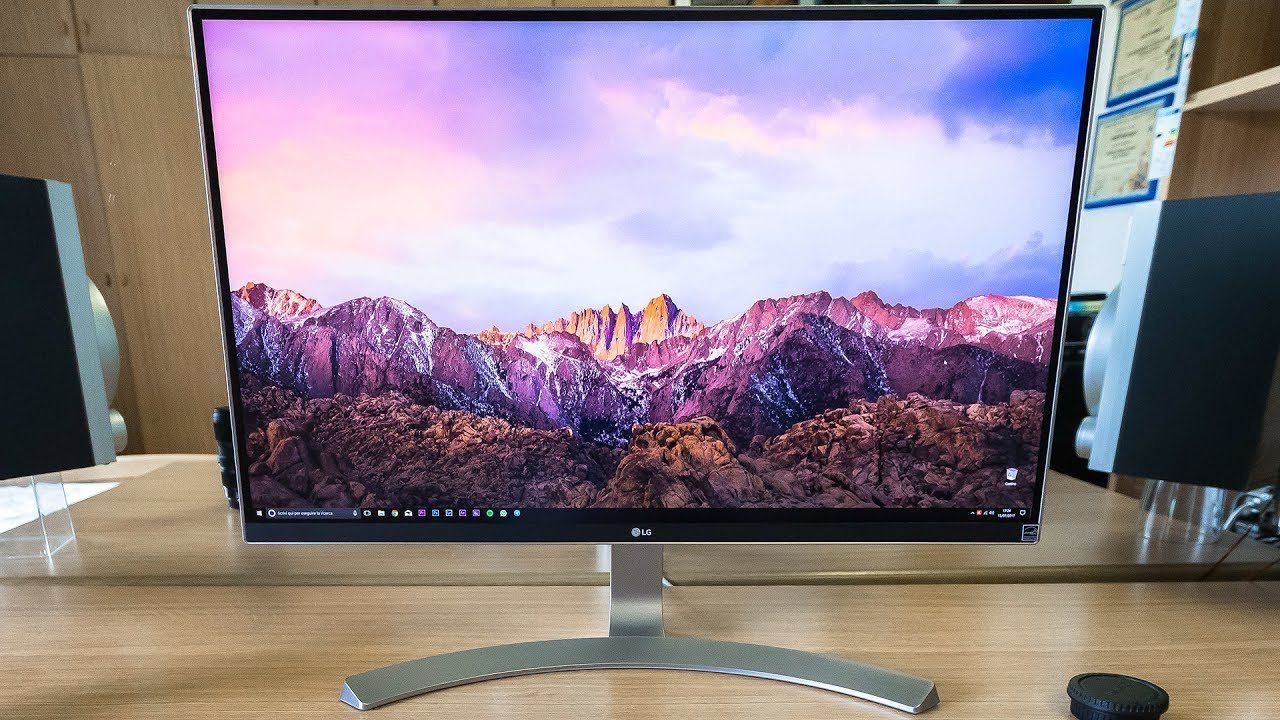
A player on a 16:9 panel may not see an enemy standing on a hill way to the right in the periphery, but a 21:9 player might be able to spot the danger without having to turn their character. Battle-royale players in particular will benefit from this increased real estate. What this means: Rather than simply squashing and stretching the image like some games do, these games (and others that natively support 21:9) will actually display more of the battlefield on either side of the screen than you would see on a 16:9 monitor.
Best 4k monitor for pc full#
A curved-panel ultrawide monitor has enough of a curve to make you feel a bit closer to the action, and in some games will also give you a competitive edge.īattle-royale titles like PlayerUnknown's Battlegrounds and Apex Legends both support full 21:9 resolution. Ultrawide monitors typically have a 21:9 aspect ratio (as opposed to the usual 16:9) and offer a much wider field of view than a standard widescreen monitor, but they take up a lot of room. A 30-inch 4K UHD monitor will deliver a stunning picture with amazing resolution you can go all out with a 34-inch ultrawide monitor with or without a curved panel or you can pick up something larger still. If you have lots of space, and money is no object, even bigger monitors are available. If desk space is an issue, there are plenty of 24-inch monitors out there, but with these, you'll be limited in most cases to a 1,920-by-1,080-pixel resolution. This holds double for 4K Ultra-High Definition (UHD) monitors, with a resolution of 3,840 by 2,160 pixels, such as the Acer Predator XB3. The higher pixel count provides much sharper imagery than full HD, but you'll need a reasonably powerful graphics engine to play the latest games at the higher resolution, especially if you have all the effects enabled. Many newer models are Wide Quad High-Definition (WQHD) monitors with maximum resolutions of 2,560 by 1,440 pixels (also dubbed "1440p"). If you have the room and don't care so much about the competitive gaming world, though, a larger screen provides plenty of space for your onscreen characters to stretch out and offers the opportunity to go beyond full high definition. The larger you go in screen size, the more difficult it is to keep every enemy combatant in your peripheral vision.

Being able to see every element on the screen at once is a vital advantage in a competitive multiplayer environment. (A 24.5-incher seems to be the sweet spot, especially in esports-focused models like the Asus ROG Swift 360Hz PG259QN.) Why? Well, if you're playing a highly competitive title such as Counter Strike: Global Offensive or League of Legends, having a smaller screen means you can keep the monitor closer to your eyes while also keeping more of the frame in view.

If you've watched any esports tournaments over the past few years, you've probably noticed that all the players are playing on screens smaller than that size. That said, in some select cases you'll want to keep the size of your monitor at 27 inches or under. When it comes to gaming monitors, bigger is almost always better.


 0 kommentar(er)
0 kommentar(er)
